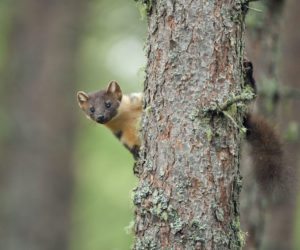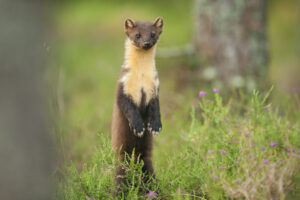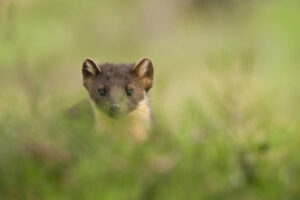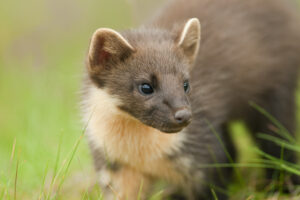Pine martens are elusive animals, found primarily in the north of Britain. Mostly chestnut-brown in colour, pine martens have a characteristic pale yellow ‘bib’ on their chin and throat, and a long bushy tail.
Behaviour
Pine martens are fantastic climbers that prefer to live in woodlands where they live in holes in trees, old squirrel dreys or old birds’ nests. They feed on small rodents, birds, eggs insects and fruit, and although rare, can be encouraged to visit bird tables. During the mating season, pine martens make shrill, cat-like calls. In the spring, they have litters of 3-5 young, which are independent by summer.
Size
- Length: 45cm plus a tail of 25cm
- Weight: 900g-1.7kg
- Average lifespan: up to 10 years
Status
Protected in the UK under the Wildlife and Countryside Act, 1981, and classified as a Priority Species in the UK Biodiversity Action Plan.
Distribution
Found in Scotland, North Yorkshire and Northumberland.
When to see
Jan – Dec
Facts
- Bilberries can make up to 30% of a pine marten’s summer diet resulting in the droppings turning blue in colour. The species use regular latrines, usually on boulders or logs that are in conspicuous spots. When they’re fresh, droppings may have a slimy appearance due to mucous binding them together. They may contain fur, feathers, bones or seeds.




